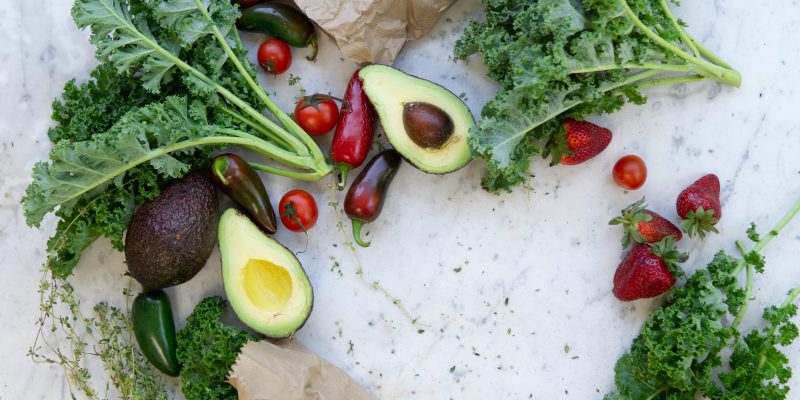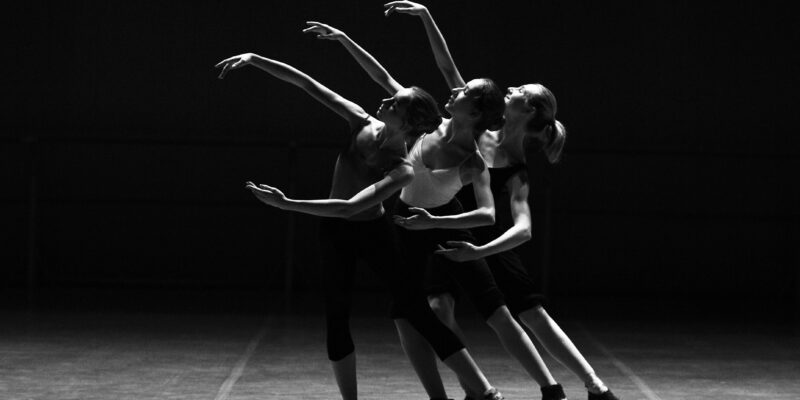For dancers, understanding the difference between food rules and choices can help you cultivate a healthier approach to eating. In this blog post, we’ll explore these concepts and offer practical tips to ensure you’re making nourishing choices rather than restrictive rules.
Read More...Male Dancers: Nutrition, Body Image, & Disordered Eating
For male dancers, nutritional challenges are a reality when navigating intense training schedules. The unfortunate reality of unrealistic body ideals that push thinness and extreme muscular physiques are often to blame. Proper nutrition, however, is crucial for optimizing performance, enhancing recovery, and preventing injuries. This blog post will dispel the nutrition- and body image-related misinformation and uncover the fundamentals of constructing a comprehensive plan to fuel for performance.
Read More...Cross Training: How Much Is Too Much?
Dancers have exercise built into their lifestyles. Whether it’s classes, rehearsals, or cross-training, getting enough physical activity during a day is rarely our issue. What’s more of an issue, however, is knowing how much is too much. While cross-training is essential to enhance strength, flexibility, and endurance, it’s crucial to recognize when your cross-training efforts become excessive. In this blog post, we’ll uncover everything dancers should know about over-training and over-exercise.
Read More...A Dancer’s Guide to Regular Periods
Period health can significantly affect a dancer’s performance. Irregular or absent periods can be a sign of inadequate nutrition and overtraining, which can lead to decreased bone density, increased risk of injuries, and reduced energy levels. Painful periods can also impact concentration and stamina during rehearsals and performances. This blog post will uncover everything dancers need to know about period health and strategies to support it.
Read More...Healthy Recipes for Dancers
Enjoy these favorite power combos from The Healthy Dancer and To The Pointe Nutrition (TTP) Ambassadors! We offer delicious meal and snack options for busy dancers, including healthy, delicious recipe ideas and ways to meal plan for the week ahead.
Read More...A Dancer’s Guide to Finding a Nutrition Professional
From performance optimization to supporting your relationship with food, it’s no secret that good nutrition education is paramount. However, finding the right practitioner requires careful consideration. In this blog post, dancers can uncover what is most important when seeking a nutrition professional.
Read More...A Dancer’s Guide to Food Allergies & Intolerances
Food allergies are serious and can be life-threatening. For dancers who have been medically diagnosed with one or more food allergies, constructing a nourishing meal plan can be challenging. This is further compounded when dancers face the reality of a busy and active schedule. This blog post deconstructs the nuances dancers face when navigating food allergies, along with practical tips for health and performance.
Read More...Plant-Based Diets- An ultimate guide for dancers
A well-planned vegan and/or vegetarian diet can provide health benefits at any life stage. The same holds true for athletes and dancers. With a well-planned menu, dancers can access all essential nutrients through the inclusion of various vegetables, fruits, whole grains, legumes, soy products, nuts, and seeds. However, omitting animal products like meat, seafood, eggs, and dairy does raise concerns of nutrient availability. This blog post will offer a guide to plant-based nutrition tailored for dancers.
Read More...Cultivate A Healthy Summer Intensive
Summer intensives are an enormous investment of a dancer’s time, energy, and money. New teachers, choreographers, and peers broaden a dancer’s network and help to create relationships that last a lifetime. These programs also offer dancers an incredible opportunity to sharpen their technical skills while providing the potential for future studies— full-time trainee programs, apprenticeship contracts, and invitations to junior companies are all on the table. But among these benefits are the inevitable challenges faced when dancing in a highly competitive environment.
Read More...Food and Mood: Considerations for Dancers
Food provides the nutrients and energy our bodies need to function, but its influence extends beyond mere sustenance. Increasingly, research highlights the profound connection between what we eat and our mood— an interplay of nutrients, brain chemicals, and lifestyle factors that together support a functioning mindset. This article uncovers how our food choices impact our moods and strategies dancers can implement to enhance the connection.
Read More...A Dancer’s Diet: Probiotics
Probiotics are the “good” guys, specifically bacteria and/or yeast, that work to keep the peace among this population microorganisms. Promising research supports the benefits of probiotics, specifically in regards to digestive health, immunity, and even mental health. This post explores the myriad benefits of your microbiome, including a closer look at probiotics and why dancers should consider them as part of their nutrition plan.
Read More...Sugar In A Dancer’s Diet
High-sugar foods are a focal point of concern for dancers. However, fearing and attempting to eliminate sugar from your diet can be misleading and detrimental to performance. In this article, we’ll explore why dancers should not fear sugar, dismantling the myths and regaining the ability to eat (even high-sugar foods) in a guilt-free and supportive way.
Read More...Nutrition for Dancers
For dancers, there are five fundamental values to consider when building your fuel plan. Nutritional Adequacy (Are you eating enough?), Macronutrient Balance, Mealtime Consistency, Food Variety, and Food Flexibility. A dancer’s diet should consist of at least 55–60% carbohydrate, 12–15% protein and 30% fat. Carbohydrate is the major energy source for an active dancer. Honoring cravings and prioritizing a dancer’s relationship with food is essential.
Read More...Gaining Weight As A Dancer, Healthfully
When is weight gain necessary for a stronger and injury-free performance? This will depend on your unique situation— dance schedule, weight history, nutrition history, and injury status, to name a few. It can be challenging to come to terms with the need for weight gain, especially if you’ve struggled with a fear of weight gain or a disordered relationship with food. As a starting point, let’s discuss the key reason for needing to gain weight.
Read More...The Importance of Sleep for Dancers
An insufficient night of sleep can have a detrimental impact on a dancer’s well-being. Amidst the whirlwind of rehearsals, performances, and rigorous training, sleepless nights become the norm for dancers. A dancer who is actively training and performing should aim for more than 8 hours to optimize recovery.
Read More...A Dancer’s Guide to Caffeine
Is caffeine an ally or adversary for dancers? While some believe caffeine offers benefits like increased focus, its effects vary from dancer to dancer. Understanding the nuances of caffeine consumption is important not just for performance, but also, for safety. In this blog post, we’ll delve into what dancers need to consider regarding the effect of caffeine on their performance.
Read More...How Many Calories Does A Dancer Need?
Are you eating enough as a dancer? There are many signs to help answer this question. Calories are a widely confusing and sometimes misguided topic, and this article will clarify everything you need to know about dancers and eating enough as a dancer.
Read More...Alcohol On Dance Performance
For dancers of the legal age to drink, understanding the effects of alcohol on performance is crucial not only to maintain your performance but to ensure your safety. In this blog post, we’ll explore what every dancer should know about how alcohol can impact their performance, including how to identify your limits safely.
Read More...What Is A Healthy Diet For Ballet Dancers?
A ballerina diet focuses consistency and balance. Ballet dancers need to optimize their food choices to support their energy to dance. As a result, a varied and non-restrictive diet is key. Add foods like colorful fruits and veggies, whole grains, eggs, potatoes, blueberries, to name a few.
Read More...Pantry Staples for Dancers
For dancers, the benefits of a well-stocked pantry are vast. It eases meal prep when long hours in the studio often mean less time in the kitchen. It helps with eating on a budget and offers a simple solution to boosting the nutrient density of your meals. So what pantry staples should every dancer stock? This blog post will uncover essential pantry staples for dancers to ensure a balanced and nourishing meal plan. The best part? Each is shelf-stable, making it a budget-friendly and convenient addition to meals or snacks.
Read More...





















